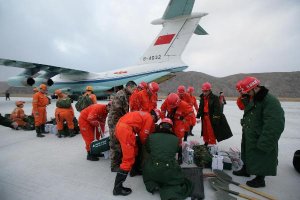Hypothermia is a dangerous drop in the temperature of the body that is usually caused by prolonged exposure to cold temperatures. The risk of cold exposure increases during the winter months. Normal temperature of the body is 98.6 degrees but with hypothermia, the temperature drops below 95 degrees. In severe hypothermia, the temperature of the body drops to 82 degrees or lower.
[youtube url=”https://www.youtube.com/watch?v=hmO0dfO2oTg”]Causes
- Hypothermia can be caused by exposure to cold, without enough warm, dry clothing for protection.
- Other mild environments can also cause hypothermia depending on the age of the person, body fat and body mass, overall health of the person and the length of time being exposed to cold temperatures.
- Frail and old people inside a 60 degrees room can also develop mild hypothermia. Babies and infants sleeping in cold rooms are also prone to develop hypothermia.
- Other conditions such as diabetes and thyroid conditions, taking certain medication, using drug or alcohol and severe trauma.
Symptoms

- Slow and shallow breathing
- Drowsiness or exhaustion
- Shivering which stops as hypothermia becomes severe which is a good sign that the heat regulation system of the body is still alive
- Confusion and loss of memory
- Slurred or mumbling when talking
- A slow and weak pulse
- Loss of coordination, fumbling hands and stumbling steps
- Hypothermia that is severe can cause the affected person to become unconscious, not breathing or has an absent pulse.
- Infant with hypothermia have bright red skin and cold when touched and they have low energy.
Treatment
- Remove any wet clothing, gloves, hats, shoes and socks.
- Protect the affected person against drafts, wind and further loss of heat using warm, dry clothes and blankets.
- Move the affected person to a warm place as soon as possible.
- Start rewarming the affected person using extra clothing and warm blankets. Other items that can be used in rewarming include an electric blanket for the torso areas and heating pad and hot packs can be used on the torso, neck, armpits, groin and neck, but these can cause burning of the skin. Another way is using the body heat if all these materials are not available.
- Take the temperature of the person if a thermometer is available.
- Give warm liquids but avoid alcohol and caffeine which can cause loss of heat in the body. Avoid giving liquids if the affected person is unconscious.
- If the person is unconscious, no pulse or signs of breathing, apply cardiopulmonary resuscitation or CPR Feel for the pulse at least for one minute before starting CPR because the heart rate can be severely slow, and avoid CPR if there is already a heartbeat. CPR should be continued if there are no signs of breathing or pulse until medical help is available.
